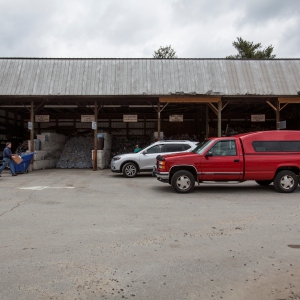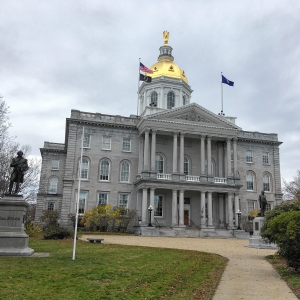Fecal bacteria in state’s beaches
| Published: 07-14-2023 5:01 PM |
As New Hampshire’s beaches draw crowds this summer, swimmers are urged to heed warnings and alerts appearing at the beaches and online when poor water quality is found.
All the rain hasn’t helped much either.
This week, fecal bacteria advisories have been issued for White Lake State Park Beach, Wentworth State Park Beach, Richardson Park Beach and North Hampton State Park Beach as part of the state’s beach inspection program. High rainfall has contributed to elevated bacteria levels, according to the Department of Environmental Services.
“Runoff from roads and parking lots can carry contaminants, such as nutrients and bacteria, into the state’s waters,” state environmental safety officials said in a statement. “Residents and visitors may see oil slicks or large amounts of debris entering bodies of water from the excessive runoff, breached dams, and road or culvert washouts.”
The source of fecal contamination varies from beach to beach, with causes ranging from waterfowl such as ducks and geese to outdated sewer systems and stormwater runoff, according to Michele Condon, the state’s beach program coordinator.
“We can just continue to monitor these beaches to see which ones are more of an issue and we can try to determine what those issues are,” Condon suggested as one way to address the problem. “Try to avoid feeding geese at the beach, not allowing dogs on the beach and avoiding those areas that have advisories.”
A recent report published by Environment New Hampshire Research & Policy Center, a non-profit advocacy organization, warns of the extent of fecal bacteria contamination in New Hampshire beaches.
On at least one testing day, 75% of the state’s beaches were found to be “potentially unsafe” for swimming due to increased fecal contamination, meaning the previous unsafe results had not officially been cleared by newly published testing results.
Article continues after...
Yesterday's Most Read Articles
 UNH faculty and students call on university police chief to resign following his alleged assault on a student
UNH faculty and students call on university police chief to resign following his alleged assault on a student
 Steeplegate project to reopen to public comment as developer seeks to reduce required parking
Steeplegate project to reopen to public comment as developer seeks to reduce required parking
 Opinion: NH should support SB 553
Opinion: NH should support SB 553
 A turbulent 50-year history: Inside the rise and fall of a tiny Catholic college in Warner
A turbulent 50-year history: Inside the rise and fall of a tiny Catholic college in Warner
 Hopkinton tries to nab out-of-town trash bandits
Hopkinton tries to nab out-of-town trash bandits
 Lawyers and lawmakers assert the Department of Education is on the verge of violating the law
Lawyers and lawmakers assert the Department of Education is on the verge of violating the law
Out of the 16 beaches tested in 2022, the report states that New Castle Town Beach on the Piscataqua River leading to the Atlantic Ocean was identified as having elevated bacteria levels on 30% of the days it was tested.
“New Castle tends to be in more of a reduced wave, it’s kind of in a cove,” explained Condo. “The water is a little bit more stagnant there and that can influence levels.”
Hampton Beach State Park and Wallis Sands Beach on the Atlantic Ocean fared the best out of all the state’s beaches, with unsafe conditions detected on just one of the 24 days tested, accounting for only 4% of the testing period.
Factors contributing to seawater pollution, include outdated sewer systems, poorly maintained sewer lines, stormwater runoff and intensive factory farming practices that generate excessive amounts of manure, according to the report.
Swimming in contaminated waters leaves people at risk for developing respiratory and gastrointestinal diseases, as well as ear and eye infections. They may also experience skin rashes when exposed to contaminated water.
Condon found fault with some of the data in the report, saying the state did not issue any advisories at Hampton Beach State Park and Jenness Beach in 2022.
During summer, as part of the state agency’s inspection program, samples from more popular beaches, such as coastline beaches and state parks, are collected twice a week, whereas beaches with fewer visitors are sampled once every other week.
Although the federal bipartisan infrastructure law has significantly increased funding for sewage and stormwater in New Hampshire, amounting to $17,786,000, environmental advocates argue that further actions will be imperative to completely eliminate sewage and runoff pollution throughout the state.
“It is time for New Hampshire officials to commit themselves to that goal and build on the progress of the bipartisan infrastructure law to get there,” said John Rumpler, the clean water director at Environment New Hampshire Research & Policy Center and a co-author of the report said,
To effectively reduce sewage overflows and runoff pollution, the report also recommends states invest in green infrastructure solutions such as rain barrels and permeable pavement, as well as repairing deteriorating water infrastructure.
For the most recent beach advisories and closures in New Hampshire, visit the official website of the New Hampshire Department of Environmental Services.


 Following budget cut, Pembroke revisits future of elementary school re-build
Following budget cut, Pembroke revisits future of elementary school re-build Granite Geek: Free government software for taxes – what could go wrong? (Not much, as it turns out)
Granite Geek: Free government software for taxes – what could go wrong? (Not much, as it turns out) To snuff out cancer, NH firefighters seek regular screenings
To snuff out cancer, NH firefighters seek regular screenings New Hampshire jury finds state liable for abuse at youth detention center and awards victim $38M
New Hampshire jury finds state liable for abuse at youth detention center and awards victim $38M
